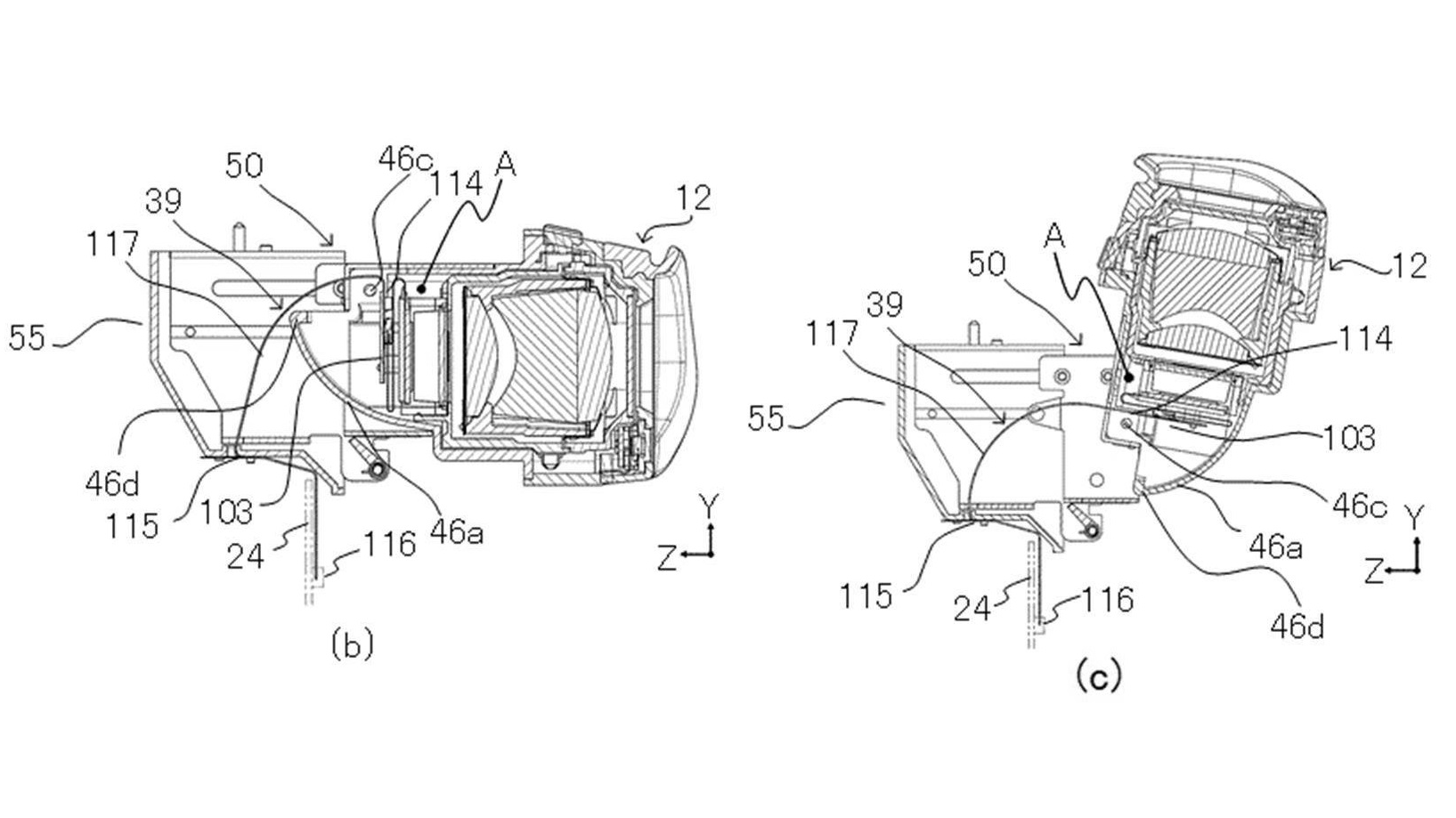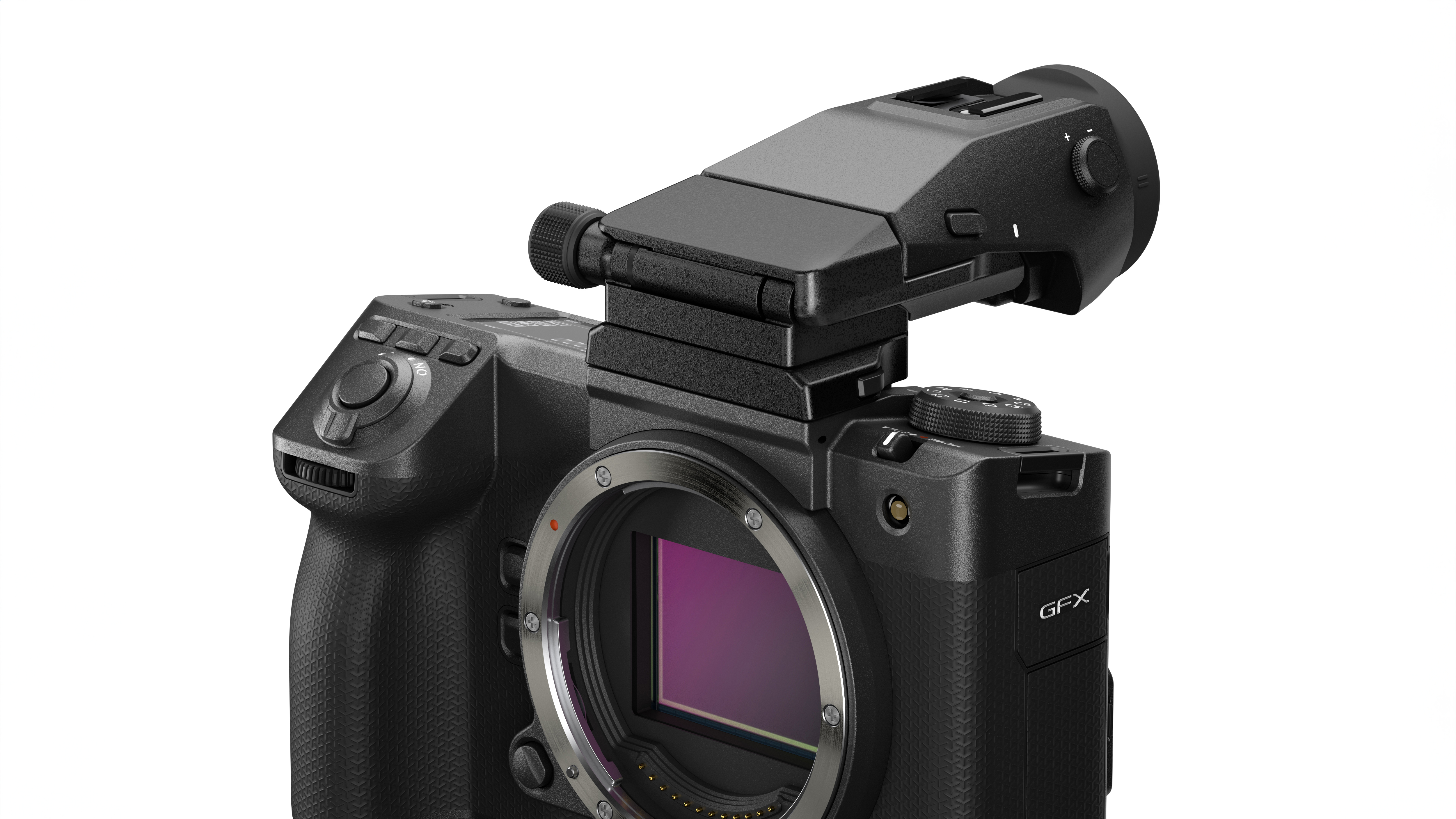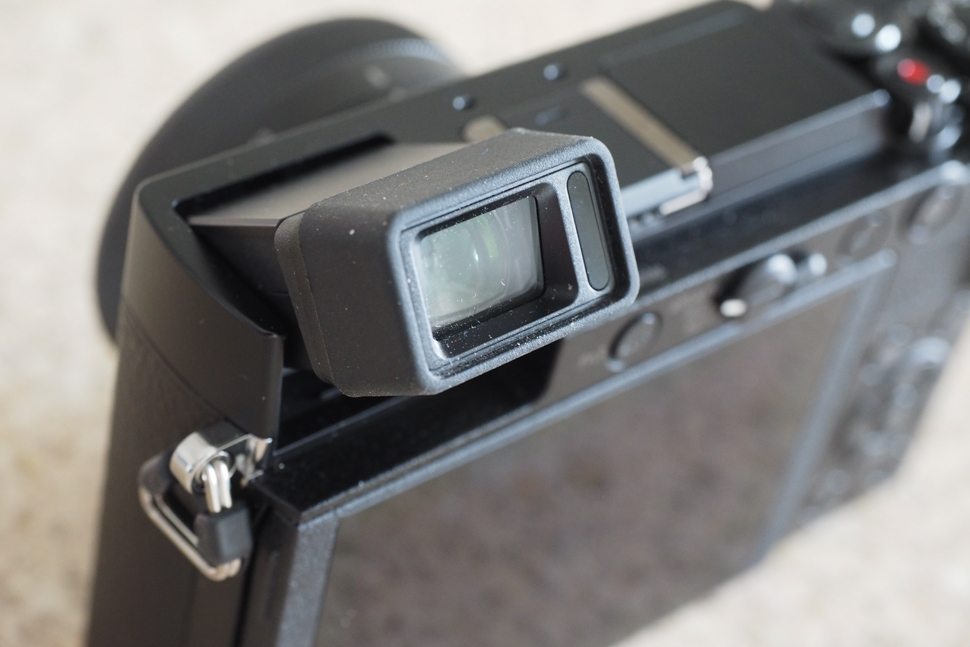
A recent patent filed in Japan suggests Canon could be working on a new tilting EVF (electronic viewfinder). The patent goes into detail about how such a tiling mechanism would work, specifically how the interconnect cable between the main body of the camera links to the tilting portion of the viewfinder. The length and routing of such a ribbon cable is critical, to ensure years of repetitive movement don't stress, pinch or fatigue the cable to the point that electronic communication is severed and the EVF ceases to function. As is shown in the patent diagram, Canon's EVF design looks like it would tilt from horizontal to almost vertical. With a near-90-degree tilt therefore requires the flexible interconnecting cable to have a significant range of movement, hence the engineering challenge.

Tilting electronic viewfinders are still a rarity. Canon itself produced the EVF-DC1 optional tilting EVF module for use with EOS-M cameras (though the subsequent EVF-DC2 module was fixed, with no tilt movement). Fujifilm also produces an optional EVF-TL1 tilt adapter, to place between the removable EVF supplied with cameras like the GFX 50S II and GFX 100 II, and the camera body. One of the few cameras to actually be fitted with a built-in tilting EVF was the Panasonic Lumix GX9. Though undoubtedly a niche feature, there are times when being able to compose a shot by looking down on your camera is useful, such as if you're shooting from a low angle, especially in bright ambient light, which could overpower the brightness of the rear LCD screen.

When, or even if, Canon incorporates such a feature into an actual retail camera remains to be seen. But if it does release a premium flagship camera like the EOS R1, Canon will need to pack it full of unique features to differentiate it from the already-impressive EOS R3. Maybe a tilting viewfinder could be one such USP?
Story credit: Canon Rumors
Read more:







